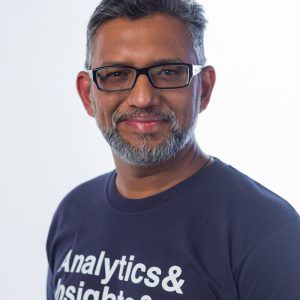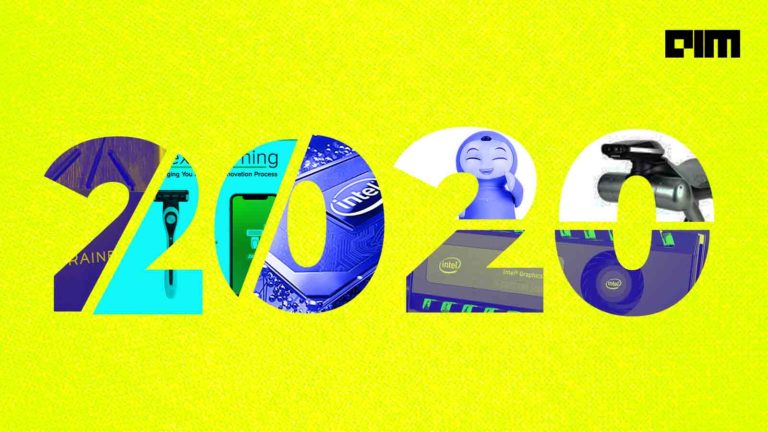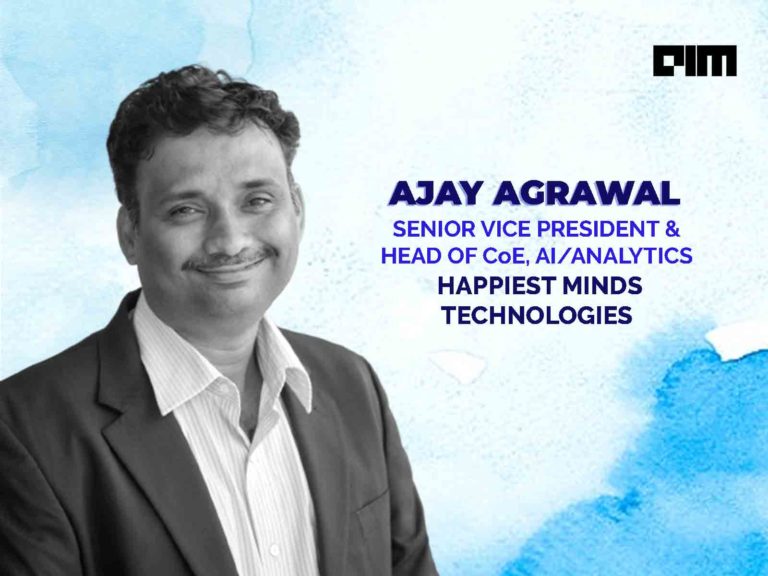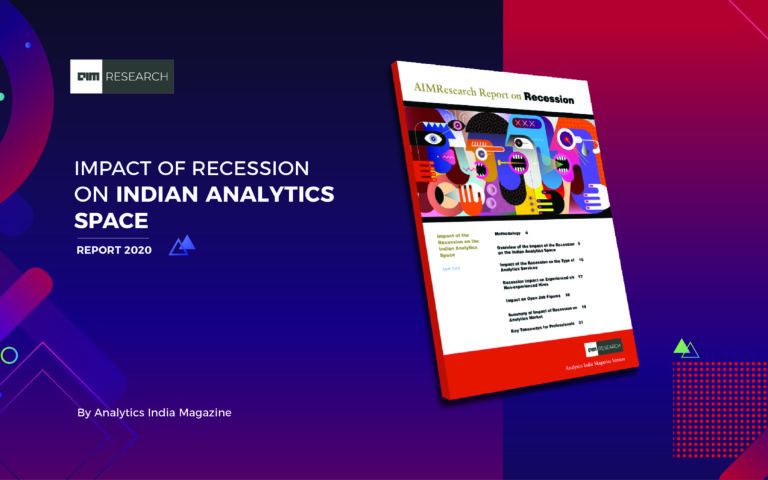While the trends that ruled 2017 were largely in the areas of analytics of things, artificial intelligence gaining prominence in businesses, growth of fintech analytics, rise of self service analytics, democratisation of data, mobile first omni channel strategy and much more, experts believe that many of these trends will continue to rule in the coming year too. There will be many others that would make a headway into the industry as 2018 marks another year in the Indian analytics industry.
While AI continues to rule the industry, chatbots are believed to be getting smarter at an accelerated pace with various industries adopting it at a large scale, largely to improve their customer experience. Experts believe that there will also be an increased adoption of analytics in healthcare, application of behavioural sciences in analytics and use of unstructured and alternative sources of data such as TV analytics, speech analytics, weather analytics will significantly increase, amongst many others.
We received close to 40 submissions from the industry stalwarts on the trends that they think would define analytics space in the coming year. After an intense study and detailed note on each of the entry, we bring to you 10 trends in analytics and artificial intelligence that professionals in this area should watch out for in the year 2018.
Read last year’s trends here
AI & Machine Learning would be the key area on everyone’s mind
 Venkat Viswanathan, Founder &Chairman, LatentViewWith
Venkat Viswanathan, Founder &Chairman, LatentViewWith
Artificial intelligence (AI) and Machine Learning (ML) penetrating into virtually every sphere and industry, leading organisations are using machine learning–based tools to automate decision processes, while simultaneously using the power of artificial intelligence (AI) for digital transformation. While 2016 and 2017 were the years of prototypes, 2018 shows a clear trend of an increase in investment in big-data analytics and cloud.
 Lux Narayan, CEO of Unmetric
Lux Narayan, CEO of Unmetric
The hype around AI – especially as applied to digital marketing – will continue to die down in 2018, and the applications that truly deliver some kind of tangible business benefit will come to the fore. Technology and software companies that say they offer AI will be increasingly faced with customers that demand to know exactly how the software qualifies as AI, and will have to clearly articulate exactly what the AI does.
 Tejinderpal Miglani, Chief Technology Officer at Incedo Inc.
Tejinderpal Miglani, Chief Technology Officer at Incedo Inc.
Increasing velocity of change – Puts pressure on organizations to make better data driven decisions. What it means for the enterprise is to have the ability to derive insights from the data faster, and with greater accuracy. This will lead to cognitive/AI or machine learning functionality becoming an increasingly important ingredient in enterprise applications and analytics tools for automated insight generation.
 Avi Patchava, VP – Machine Learning & Artificial Intelligence, InMobi
Avi Patchava, VP – Machine Learning & Artificial Intelligence, InMobi
At a macro-level, India will see more news stories of implementations of AI use cases in traditional industries such as manufacturing, healthcare, banking, pharmaceuticals and automotive. For example, in addition to the incorporation of new forms of unstructured data – such as images and voice recording – companies will also start to consider how to apply reinforcement learning techniques to build more dynamic systems for more challenging use cases.
 Angshuman Bhattacharya, CEO & Co-Founder, SIBIA Analytics
Angshuman Bhattacharya, CEO & Co-Founder, SIBIA Analytics
Machine learning, much thanks to the exodus of open source projects from global providers, has gone mainstream. Most adoptions are in their trial phase, where enterprises are experimenting the ways in which they could customise the process output. Unstructured data analysis through machine learning will take a leap ahead of its contemporary scope of implementation, and find additional avenues of mainstream business applications.
 Kunal Aman, Head of Marketing & Communications for SAS Institute India
Kunal Aman, Head of Marketing & Communications for SAS Institute India
2018 will see businesses adopting ML as part of their larger analytics strategy, pairing algorithms with the right tools and processes to find hidden insights in data without explicitly being programmed for where to look or what to conclude.
Unstructured & Alternative sources of data would be increasingly in use
 Umesh Sachdev, Co-founder and CEO of Uniphore System Softwares
Umesh Sachdev, Co-founder and CEO of Uniphore System Softwares
Speech Analytics: Enterprises today are adopting omni-channel analytics to understand the voice of the customer. Deploying speech analytics completes the omni-channel analytics strategy of an organisation by analysing and deriving customer insights from speech data. Speech Analytics used to be a tool for Quality Analysts. Speech analytics has now become an important tool for Business Analysts of organisations to drive business outcomes.
 Sandipan Mondal, Founder and CEO, Zapr Media Labs
Sandipan Mondal, Founder and CEO, Zapr Media Labs
TV Analytics: The year should see a significant spike in TV analytics mapping media spends to what consumers are watching on TV: which channels and shows are they watching at what time slots and for how long, besides determining exposure to TV commercials (TVCs). Brands will drive a lot of TV analytics to determine unique reach and frequency of exposure for not just their own TVCs but also for their competitors.
 Himanshu Goyal, India Sales and Alliances Leader, The Weather Company- an IBM Business
Himanshu Goyal, India Sales and Alliances Leader, The Weather Company- an IBM Business
Weather Analytics: Globally, weather is a huge variable for business performance and one of the largest big data challenges – yet most business don’t have a strategy around weather. It’s time to Incorporate weather analytics to boost business operations and bottom lines while differentiating from the competition.
 Anurag Verma, CEO, MathLogic
Anurag Verma, CEO, MathLogic
Unstructured data text, voice, images, videos are going to be add into standard mix of data elements used in everyday decisioning. Expect adoption of unsupervised techniques to generate features from unstructured data.
Abhijit Bose, Co-Founder and CEO of Ezetap
A large part of the  Indian population still falls in the ‘unbanked’ category. This unbanked category comprises of merchants and consumers. Going forward, with the help of fintech analytics, payment solution providers will get credit and lending portfolios of people from even the most inaccessible regions of India, all on a single platform.
Indian population still falls in the ‘unbanked’ category. This unbanked category comprises of merchants and consumers. Going forward, with the help of fintech analytics, payment solution providers will get credit and lending portfolios of people from even the most inaccessible regions of India, all on a single platform.
More Investment in Data Infrastructure, Platforms & Engineering
 Saurabh Kumar Sahu, Managing Director and Lead, Analytics, Accenture in India
Saurabh Kumar Sahu, Managing Director and Lead, Analytics, Accenture in India
Indian companies have already witnessed the value analytics adds to their business. Data generated by Internet of Things (IoT) devices, apps, social media and other external sources will drive analytics usage further. Organisations today realise the importance of having a single source of data and they are heavily investing in building capabilities in this area. You will see an increased use of analytics platforms which consolidates data from various sources into a single platform.
 Vikas Arora, Country Manager, Cloud Business, IBM India and South Asia
Vikas Arora, Country Manager, Cloud Business, IBM India and South Asia
With the evolution of cognitive and digital technologies, data today is the cornerstone of success for businesses. In order to stay relevant for the future, enterprises need to think data first and make data analytics a part of business strategy conversation. In 2018, we expect to see increased adoption of open source platforms such as Hadoop by developers and the development of scalable open platforms such as Apache Atlas will take centre stage. Moving forward, we will also see increased use of governed data lakes as it provides enterprises a single reference architecture, thereby enhancing business agility and improving decision making.
 Pradeep Menon, Chief Data Officer @ GE’s Global Digital Hubs
Pradeep Menon, Chief Data Officer @ GE’s Global Digital Hubs
A key trend that’s been picking up in large data orgs over the last few years, is where focus on data ingestion & piping takes precedence over data consumption. Data Engineering as a field will grow even more in importance in 2018 and we will see even more talent being deployed in that area, in my opinion. Data architecture skills will come to fore and we will need to surpass engineering and ingestion issues before we get down to consuming information.
 Yadavendra Balehosur, CEO, RobustDesign
Yadavendra Balehosur, CEO, RobustDesign
There will be increased demand for people who can integrate more and more data and provide it to a machine. Visualisation will be done by business people or machines. The overall needs of the industry for data science becomes higher, but due to packaging and commoditisation of AI, the demand for data scientists might actually become less as more and more data science gets packaged and becomes available for consumption by either ‘normal software people’ or business analysts or even business users.
 Chandra Ambadipudi, CEO of Clairvoyant
Chandra Ambadipudi, CEO of Clairvoyant
In 2018, Hadoop will continue to go mainstream, with significant ROI for big data analytics now demonstrated across verticals. Large scale Hadoop deployments in Financial Services and Healthcare will increasingly augment and in some cases, replace the traditional BI/DW based data management systems across enterprises. The Hadoop ecosystem will continue to mature significantly with all the big distributions now offering data science capabilities.
IoT would remain central to analytics
 Raj Bhatt, CEO, Knowledgefoundry
Raj Bhatt, CEO, Knowledgefoundry
The data from current IoT pilot rollouts (sensors, smart meters, etc) will be used to make smart decisions using predictive analytics. E.g., forecast electricity usage from each smart meter to better plan distribution; forecast power output of each wind turbine in a wind farm; predictive maintenance of machines, etc.
Anand Ekambaram, Country Head, Tableau India
The Location of Things will drive IoT innovation: As a subcategory of IoT, the “location of things,” covers devices that sense and communicate their geographic position. Capturing this data allows users to consider the added context of a device’s location when assessing activity and usage patterns.
Manish Singhal, Founding Partner, pi Ventures
Sensors combined withreal time AI will lead to tangible

real time business insights: Sensors will be cheap, ubiquitous and form the bridge between real-world physical objects and analytics systems. They will generate massive amounts of real-time data.
Healthcare Industry is going to utilise Analytics in a Big way
 Dr. Ashish Goel, Director and Head, Health Economics and Outcomes Research, RWE Scientific Affairs, IQVIATM, India
Dr. Ashish Goel, Director and Head, Health Economics and Outcomes Research, RWE Scientific Affairs, IQVIATM, India
Lately, there has been keen interest from many stakeholders including pharmaceutical organisations and Ministry of Health to initiate the process of developing a framework for collection of such data, and ways in which it can assist health care providers in better clinical, economic and humanistic outcomes.
 Pooja Rao, Co-founder, head of R&D, Qure.ai
Pooja Rao, Co-founder, head of R&D, Qure.ai
The rapid rise in global population and the time and years of experience it takes to train a doctor has led to the shortage of physicians around the world. Artificial Intelligence has the potential to add tremendous value to the healthcare industry. A synergy between AI and the doctor’s expertise holds the key to revolutionising the healthcare industry.

Ganapathy V, Business Lead, Senior Director, Analytics-as-a-Service, PHILIPS Data Science & AI Group
Healthcare shifts (to low cost channels) likely enabled by IoT/ wearables/remote care; and that throws open a whole new bunch of data sets hitherto less analysed.

Dr. Nupur Pavan Bang, Associate Director, Thomas Schmidheiny Centre for Family Enterprise at Indian School of Business
Various measures like mapping the hospitals, standardising treatment protocols, usage of standardised disease codes, linking health insurance service providers with each other and with uniquely identified hospitals to prevent fraudulent and multiple claims, are ongoing. We would see accelerated efforts to use analytics in healthcare to achieve more accurate and faster results.
Analytics is becoming increasingly pervasive & invisible
 Pritam Kanti Paul, CTO, and Co-founder, BRIDGEi2i Analytics Solutions
Pritam Kanti Paul, CTO, and Co-founder, BRIDGEi2i Analytics Solutions
The way Analytics has been delivered and consumed has been evolving. It is a leap from offline reports and presentations to intelligent, embedded applications that are real-time. Thanks to the Artificial Intelligence technologies that made analytics invisible and pervasive. Now the users are able to simulate, experiment and track the analytics outputs. This is a wake-up call for analytics service providers to change the way they deliver analytics. AI is becoming increasingly pervasive and the preferred mode of delivery with analytics acting as the invisible driver for various applications.
 Andesh Bhatti, Founder and CEO of Collectcent
Andesh Bhatti, Founder and CEO of Collectcent
Every process being an analytic application, the value for an organisation will be in the answers, not the data. As we look forward to the future, more products and technologies are leaning towards what can possibly be done with the large amounts of data that is already present, without the need of harvesting more data. Analytics will be the ultimate enabler for every industry including ad tech, and will become deeply, but invisibly embedded everywhere.

Ashok Kumar, GM, L&T Technology Services
Edge analytics solves the issues of network traffic and server space constraints. Edge analytics focuses on analysing the data (with onboard analytics) and sharing the processed data on the cloud. This results in faster execution of data for further detailed analytics on cloud. Industrial Edge gateways are aimed towards providing local processing of raw data that improves time to response.
Chatbots to become smarter at an accelerated pace
 Swami, Hansa Cequity
Swami, Hansa Cequity
AI based chatbots have been creating lot of buzz for quite some time now. 2017 saw chatbots having evolved enough to differentiate between many human emotions and respond accordingly. As the design and functionality improves, this feature alone has scores of practical applications. On the other hand, psychology analysis based marketing has just started to take off. From customer care to political negotiations to education, these bots can contribute significantly in as early as next decade.
Raj Bhatt, CEO, Knowledgefoundry
Chatbots will become truly smart by connecting with recommendation engines and forecasting algorithms and becoming able to answer questions like “Google which movie should I watch tonight”, or “Alexa what should I order from the Amazon Pantry?” or “Echo, please suggest a gift under $100 for my best friend Victor” or “Google optimise my electricity usage”.
 Ganes Kesari- Senior Vice President at Gramener
Ganes Kesari- Senior Vice President at Gramener
Conversational interfaces could finally bring about the tipping point in widespread adoption of analytics. Having a natural conversation and getting answers to not just weather & traffic updates, but also financial operational metrics or deeper ‘why’ and ‘what if’ questions can transform not just businesses, but the consumer space. While this might take a couple of years to mature, we’ll see some firm, early steps & initial success stories in 2018.
Robotic Process Automation expected to become the norm in the future
Ganes Kesari- Senior Vice President at Gramener
Organisations will double up on adoption of tools that will usher the next wave of enterprise automation. While robotic process automation (RPA) and the army of efficiency-based tools would eliminate tedious, effort-intensive tasks at one end, Artificial Intelligence and the class of machine learning techniques would take the sting out of complex, cognition-intensive tasks. Prepare to say hello to your digital colleagues!
 Vinay Gupta, Head of Analytics at Suzlon
Vinay Gupta, Head of Analytics at Suzlon
IDC Worldwide Robotics team’s research suggests that developments in robotics will have the potential to disrupt the business ecosystem for all industries and hence will have significant impact on the companies functions. In coming years, it is estimated that 30% of all newly produced robots will be collaborative robots, who will function in tandem with human workers.
 Shashank Dubey, Co-founder and Head of Analytics, Tredence
Shashank Dubey, Co-founder and Head of Analytics, Tredence
Businesses are trying to automate every process that can be modularised, packaged and scheduled. As a result, there will be a huge push towards robotic process automation. This in turn will give them time to focus on solving (new/more) problems.
Democratise Machine Learning through Cloud Based Analytics platforms
Anand Ekambaram, Country Head, Tableau India
As enterprises grow increasingly wary about being tied to a single legacy solution, evaluating and implementing a multi-cloud environment can determine who provides the best performance and support for each situation. However, while flexibility is a plus, this approach increases overhead cost by splitting workloads across providers and forcing internal developers to learn multiple platforms. With multi-cloud adoption on the rise, organisations must assess their strategy and measure adoption, internal usage, workload demands and implementation costs for each platform.
 Arvind Purushothaman, VP – Data & Analytics, Virtusa Corp
Arvind Purushothaman, VP – Data & Analytics, Virtusa Corp
We will see a significant growth in the use of cloud based analytics platforms including Microsoft’s Azure Machine Learning, Google’s Cloud Machine Learning, and Amazon. This essentially means that innovation will be faster, more pervasive and accessible by organisations – small and large. Most of these platforms also make it easy to develop and train models using drag-and-drop functionality with little coding, hence organisations will be able to experiment quickly at a lower cost leading to wider rollout of Analytics in their products.
Shashank Dubey, Co-founder and Head of Analytics, Tredence
With the advent of sensors and wearables, the need to capture data from such devices (IOT) and analyse them on the fly have come to the fore. To cope with the ever-growing data size and storage requirements there will be a paradigm shift towards Cloud. Technologists and business leaders will show greater inclination to use the Op-ex centric cloud based model, as opposed to the capex based on-premise model (Typical rent vs buy scenario).
Increased Application of Behavioural sciences in Analytics
 Suhale Kapoor, Executive Vice President and Co-Founder, Absolutdata
Suhale Kapoor, Executive Vice President and Co-Founder, Absolutdata
Organisations will realise in 2018 that quantitative data alone cannot help you truly understand customer behaviour and market trends as it does not account for the changes in people’s motivations and feelings. By using big data feeds that include news reports, blog posts, tweets, and social media content, it is possible to detect and monitor subtle shifts in sentiment. This provides the context to help understand why something is the way it is and if a change can be foreseen. Companies investing in qualitative data collection will be able to uncover the deeper, more human meaning behind big data with behavioural analytics.
 Atul Jalan, CEO & MD, Manthan
Atul Jalan, CEO & MD, Manthan
Behavioural Analytics is about understanding what consumers do and how they act. It surfaces insights into consumer behaviour across a wide range of platforms from mobile, IoT, web, ecommerce etc. By applying data science, machine learning and advanced correlations to behaviour means it enables brands engage with consumers better.
Manish Singhal, Founding Partner, pi Ventures
We will begin to see the application of more qualitative fields like psychology and behavioural sciences in business. The beauty of AI is its ability to handle multiple streams of unstructured data from imprecise sources and find patterns in them. Businesses will be able to use this to understand their consumers more deeply and build better products and services.



















































































